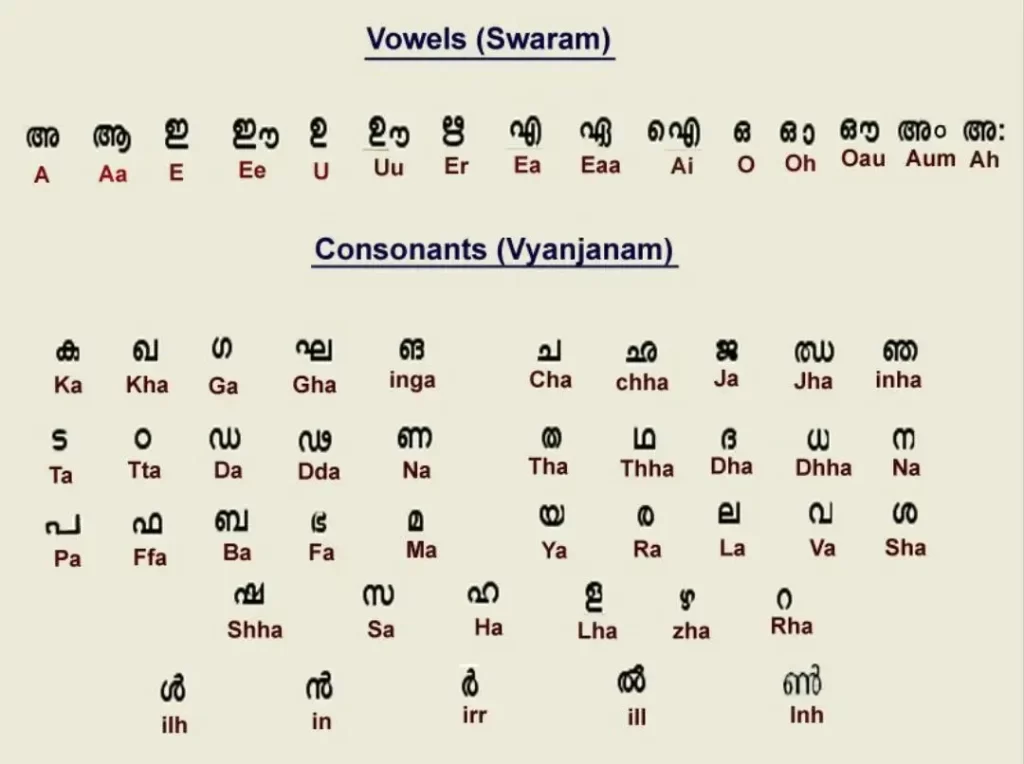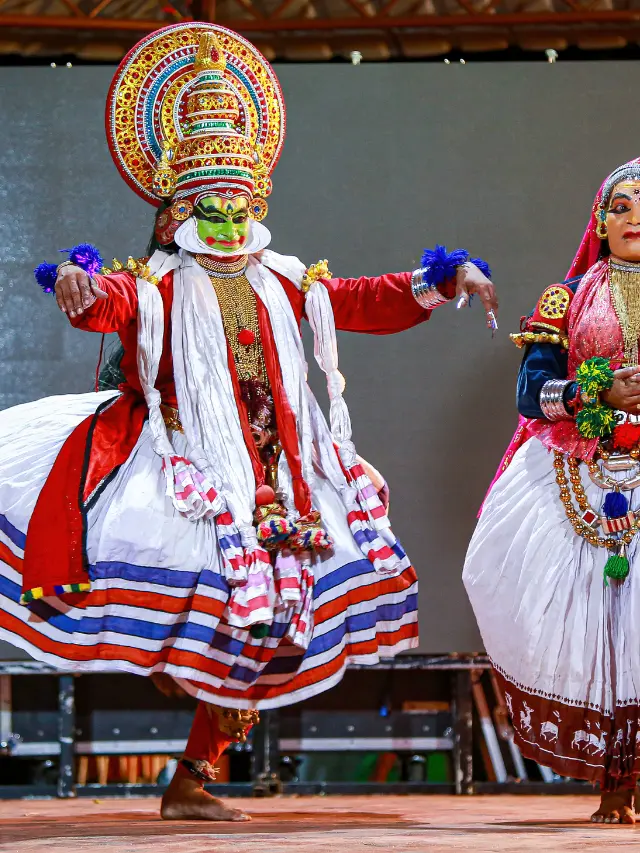Malayalam started its development as a separate language from the 13th century onwards. It is spoken as an official language of Kerala and Lakshadweep. ‘Vattezhuthu Script’ was the oldest script used for the Malayalam Language during the 9th century whereas the modern script evolved from the ‘Grandha Script ‘came into existence by the 16th century.
It is one among the Dravidian languages, originated as a split from Tamil in the ancient times and became an independent language in the 9th century AD.
Also read: Languages of India
Today we have almost 38 million Malayalam language speakers. According to the 2011 census, we have 3,48,38,819 speakers of the language which is about 2.88% of the total population.
Etymology of Malayalam
The word ‘Malayalam’ is split into two distinct words ‘Mala’ means ‘Hills’ and ‘Yalam’ means ‘Depths of the ocean’. So, it is referred to as a land of depth which lies between the Western Ghats and the Arabian Sea. In short, the term ‘Malayalam’ means ‘a hilly region’.
The language of Malayalam is also known as Kerala Bhasha, Malayalim, Malayazhma, Malayanma, Malayampazha, and so on. It also had interpretation on Sanskrit words besides the Tamil language.

Origin of Malayalam
During the ancient times, most of the linguists, grammarians and scholars have put forward their own ideas about its origin where most of the views on the Malayalam language were mere ideas. But one of the most conservative ideas among them is that Malayalam originated from Sanskrit.
Some scholars believe that Malayalam had its development from the ancient Prakrit. There are also certain tribes like the Paniyas. Yeravas and others who spoke Malayalam mixed with the Dravidian language and later it got transformed after years to become Malayalam.
Few other linguists and scholars are surprised even today how Malayalam and Tamil have certain similarity while many themes remain distinct. While some make an argument that Malayalam is the daughter of Tamil, there are also others who contend that Malayalam is the sister of Tamil language and the daughter of Dravidian language.
But in the present world, everybody is in unision on including Malayalam along with other languages like Tamil, Kotha, Kodak, Todak, and Kannada as they belong to the Dakshina Dravidian family. It’s a proven fact that Malayalam has close affinity with the Tamil language.
Similarity between Malayalam and Tamil
| English | Malayalam | Tamil |
|---|---|---|
| Cash | Kasu | Kasu |
| Labourer | Cooli | Cooli |
| Ginger | Inchi | Inchi |
| Temporary shelter | Pandal | Pandal |
| Teak | Tekku | Tekku |
These words are similar because at one point in history Malayalam and Tamil had a common root. Then as mentioned above, between the 9th – 13th century Malayalam became an independent language, and at the same time, Malayalam and Tamil became different languages.
Though Malayalam was spoken in huge masses in the state of Kerala, Tamil was received as a scholarly language in the western parts of Kerala. Gradually, as time rolled by, Malayalam rose to dizzy peaks to find a place in royal proclamations and documents to gain its popularity.
Malayalam language forms
Even today, there are different kinds of language forms that can be witnessed in modern Malayalam. Region vocation, caste, style and innumerable language forms still constitute the language. Through newspapers, radio, education, and study materials Malayalam fostered as a humane language form. Apart from that, geography, culture, caste and religion also contributed to Malayalam.
Influence of other languages
The language forms used by brahmins, nairs, ezhavas, harijans, Christians, and Muslims have also been discovered. Brahmins use most of the Sanskrit words in their language to a large extent, and it is also sparsely used by the marginalized sections. Christians spoke Malayalam along with English, Latin, Syriac, and Portuguese words. Muslims used Arabic and Urdu words.
